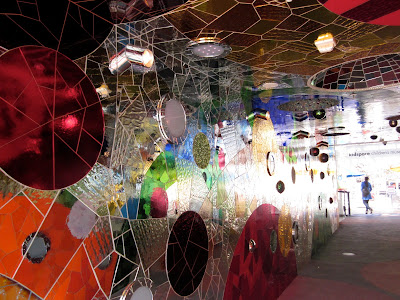
Government cuts in the United Kingdom are beginning to hit the arts but other areas within the public sector are also taking a beating. In London, many neighborhoods are losing libraries: Croyton will lose six libraries, Barking and Deganham will lose five, and Hounslow, the borough next to mine, will lose eight. Libraries scheduled for closure are not necessarily the least used and many of these libraries serve upwards of 50,000 visits annually.
For many Londoners (myself included), this is a catastrophe. But some communities have not been taking the news without a fight. When they learned of their libraries plan to close, The friends of Stony Stratford Library in Milton Keynes started a campaign to show how important the library was to the community. Called “Wot no books?” their grassroots efforts started with a Facebook and email call from a community member asking everyone she knew to take out the maximum number of books allowed on their card (usually 15) with the goal of emptying the library of all its resources by the end of January. The librarians supported to campaign and were please to be checking out up to 380 books an hour, although they admit that re-shelving when the books are returned will be a challenge. The librarians even arranged that the last book checked out would be Mary Norton’s The Borrowers. The community succeeded and shelves were emptied and have now had a really thorough cleaning.

The story has been picked up by press all over the world including the United States, Australia and New Zealand and is being replicated by libraries throughout the United Kingdom. The BBC covered the story in the UK and flyers were made available for those who wanted to support the effort.
The current economy puts libraries and museums in the position of articulating and evaluating their worth to the community and supporting or launching campaigns to keep or raise public and private funding. But how deep is the problem and it is uniform across institutions? How are libraries measuring their impact within their communities and how organized are their communication efforts?
Answering these questions has been a challenge as it has not been clearly articulated how the decision was made about which London libraries to close. In speaking with the senior librarian at the main branch of the Ealing Library (my main library), she explained that she has not yet heard about how cuts will affect our individual libraries. She expects that the leaders at the Borough level will be making the decisions and that these will be pushed down with little input from the community or libraries effected. A review of library services has been announced, looking at buildings and services to search for savings.
Ealing seems to have fared better than most boroughs with no closures to date. Cuts made thus far have been in personnel with open positions frozen and not filled. The senior librarian was hesitant to discuss it further because she explained that the Council is very strict about messaging and librarians are not encouraged to give their opinions.
All the same, the Ealing Libraries are doing what they can to show how the community values their services. Sponsored by the Campaign for the Book and the Ealing Alliance for Public Services, a “Read-In” was held on a recent Saturday. Participants were encouraged to bring or borrow a favorite book and read in the library, participate in discussions about their favorite work and the importance of libraries, and show how much libraries are valued in the community.
It is uncertain for both Ealing and Stony Stratford that any public display of support for the libraries will save them. Emily Malleson, the mother who started the “Wot, No Books?” campaign has said “We are still in a period of consultation on the library’s future. If 1,000 people sign the petition, the issue will automatically come up for discussion at a Milton Keynes council meeting. Despite the huge response, we don’t know what’s going to happen. We may not necessarily have made a difference.”
Although it is unsure what the impact of these actions will have, there are several positive outcomes that have come as a result that can also work for advocacy efforts in Museums:
- The community can voice their support of an organization through concrete actions, which decrease their feelings of helplessness and deepen their commitment to that organization.
- The network of friends for an organization can grow exponentially as the community galvanizes around a cause. As a result of the Stony Stratford campaign the library friends and Facebook groups now have hundreds of members.
- Significant advocacy efforts can become big news stories, which can be used to show public support and make a case of the importance of public services to a community.
- An organization can gather statistics related to its importance in the community to use for further advocacy or fundraising efforts.
As discussed in previous blog entries, museums and libraries are doing amazing and creative work in our communities. With cuts in public funding affecting everyone, the need for innovative partnerships between both types of institutions will only continue and force us to become equally creative about mobilizing our users to show and quantify their support.
































